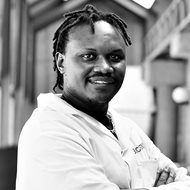Summary
Aquaculture is increasingly becoming the preferred source of protein globally. In Africa, the majority of women and youth are creating opportunities for themselves and others by farming fish. Aquatic farmers in Low and Middle-Income Countries (LMICs) rely on Antimicrobial Agents (AMA) for the health of their animals because they are unable to access veterinary vaccines equitably and reliably. Many African countries are unable to produce their own veterinary vaccines and those with the capacity to do so are unable to meet the local demand. Animal husbandry in LMICs is threatened by the increase in AMA resistance and if not properly managed would drive the increase in zoonotic infections. In essence, the lack of access to veterinary vaccines drives animal disease outbreaks in LMICs causing poverty, tragic public health outcomes, and economic losses. To solve this problem Iraka Biotech has developed PIT™, a versatile platform technology that enables the localized production of veterinary vaccines ensuring that farmers are able to equitably access animal vaccines. PIT™ has been used in the preparation of Salmonella pre-candidate vaccines against organisms that cause infection in animals. The results have shown that PIT™ inactivates a significantly higher amount of antigen in a far shorter time while occupying a significantly smaller footprint in comparison to current methods used to produce whole-cell inactivated vaccines. There is a pressing need to demonstrate the value of PIT™ to produce vaccines used to protect aquaculture stocks. Iraka Biotech aims to demonstrate this value in partnership with the Institute of Aquaculture at the University of Stirling, Cochin University of Science & Technology and Kerala University of Fisheries and Ocean Studies.
Project Outcomes:
The aquaculture industry is experiencing exponential growth to meet the increasing global demand for fish products. However, this expansion brings forth significant challenges, particularly concerning the biosecurity threats posed by pathogenic microorganisms. To combat these challenges, we conducted a comprehensive study aimed at evaluating the safety and immunogenicity of an experimental A. hydrophila vaccine. The application of the innovative PIT™ technology achieved a remarkable feat: complete inactivation of this pathogen in less than 24 hours, reducing its viability by nearly 9.7 logs. This extraordinary outcome underscores PIT™ as a rapid and effective method for inactivating harmful bacteria, all without the need for hazardous chemicals. This signifies that, with the PIT™ approach, one can prepare 25 times more vaccines per millilitre compared to the formalin approach, significantly reducing the manufacturing footprint. The significance of this achievement cannot be overstated. In stark contrast, traditional methods using formalin require a protracted 96-hour timeframe to achieve similar results. PIT™ offers a rapid, safe, and efficient alternative for pathogen inactivation. An essential phase of this research involved a comparative analysis of vaccines produced via the two methodologies — PIT™ and chemical inactivation using formalin. Significantly, the PIT™-derived vaccine exhibited an exceptional safety profile when administered to fish. This safety profile closely mirrors that of its formalin-derived counterpart, indicating that PIT™ technology provides a secure and sustainable avenue for vaccine production. While these findings signify a substantial advancement, the journey for PIT™ is ongoing. We are actively researching ways to optimize PIT™-prepared vaccines to achieve superior antibody responses compared to those observed in formalin-prepared vaccines. This research is centred on enhancing the immune responses elicited by PIT™ vaccines, a critical aspect in evaluating their overall efficacy and optimizing their performance. The implications of this research resonate globally, particularly for the aquaculture industry in Low- and Medium-Income Countries (LMICs). The aquaculture sector has evolved into a pivotal economic driver. Yet, infectious diseases continue to necessitate antibiotic intervention, contributing to the pressing issue of antibiotic resistance. Vaccines have emerged as a promising solution to combat these diseases, but their accessibility remains limited, largely due to the challenge of obtaining specific strains crucial for their production. Enter autogenous vaccines, derived from strains indigenous to the site in question. However, their conventional manufacturing techniques involve heat and the use of chemical agents like formalin, rendering them economically prohibitive for smaller-scale operations. The introduction of PIT™ technology as a chemical-free inactivation platform heralds a new era in cost-effective, small-scale autogenous vaccine production. In summary, this study heralds PIT™ as a transformational technology, providing a safer, cost-effective approach to inactivating harmful bacteria — an indispensable step in vaccine development. This breakthrough holds the promise of mitigating disease outbreaks and reducing reliance on antibiotics in the aquaculture sector, ultimately fostering improved aquatic health and long-term sustainability. These findings, while marking a significant milestone, are not the conclusion of the journey. Work remains to be done to optimize PIT™ technology and make it accessible to the agricultural sector at large.
 Dr Cornelius Cano Ssemakalu
Dr Cornelius Cano Ssemakalu
Chief Science Officer
Technological development department
Iraka Biotech (Pty) LTD, South Africa
Collaborators:
Dr Andrew P. Desbois, Lecturer, University of Stirling, UK
Dr Sean Monaghan, Lecturer, University of Stirling, UK
Dr Daniel Horton, Post-doctoral Research Assistant, University of Stirling, UK
Dr Punnadath Preetham Elumalai, Associate Professor (Biochemistry), Cochin University of Science & Technology, India
Dr Sreeja Lakshmi, Postdoctoral Research Scientist, Kerala University of Fisheries and Ocean Studies, India